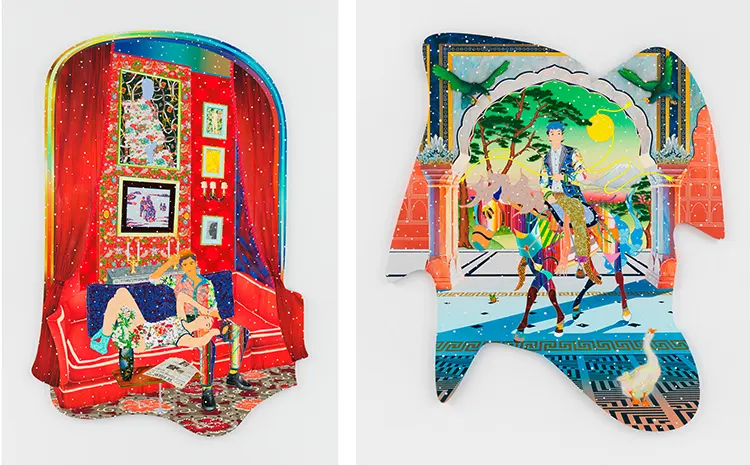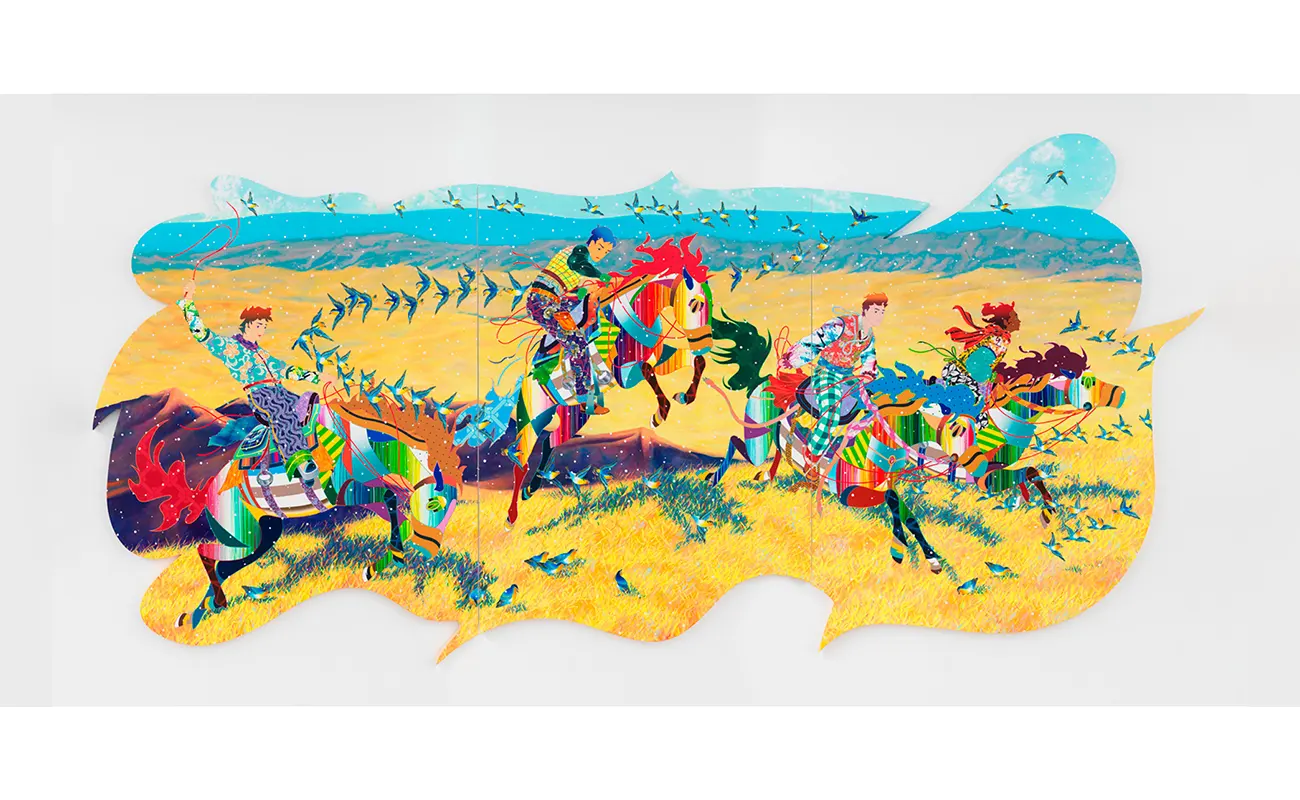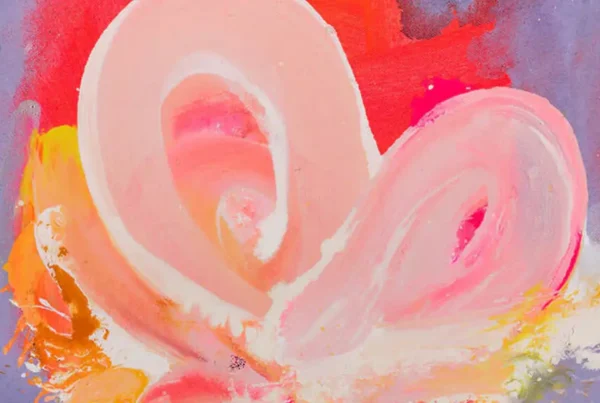Bridging Two Worlds: The Artistic Genesis of Tomokazu Matsuyama
Tomokazu Matsuyama, a visionary artist born in Japan in 1976, has navigated a unique journey from his birthplace to the bustling art scene of Brooklyn, New York. Matsuyama’s early years were marked by a blend of Eastern and Western influences, a duality that profoundly shaped his creative path. He embarked on his formal artistic training at the Pratt Institute in New York, where he honed his skills in Communications Design, graduating with an MFA. This eclectic educational background laid the foundation for Matsuyama’s diverse artistic expressions, encompassing painting, sculpture, and large-scale public installations.
The artist’s practice is a vivid testament to his personal and geographical journey. Having spent his childhood between Japan and Southern California before settling in Brooklyn in the early 2000s, Matsuyama’s work transcends simplistic East-meets-West categorizations. Instead, it delves into the deeper nuances of cultural symbiosis and identity. His art is a conversation between the traditional and the contemporary, where classical Japanese motifs seamlessly blend with Western art history and pop culture. This blend reflects Matsuyama’s own life, a continuous oscillation between different worlds, and is central to his artistic narrative.
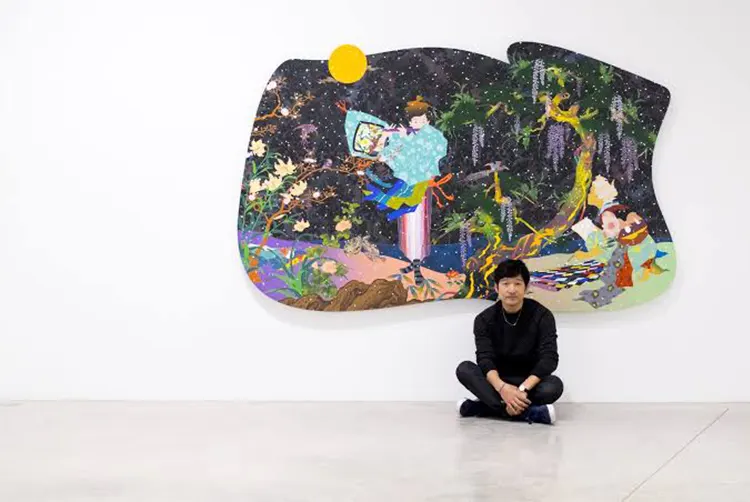
Tomokazu Matsuyama: An Expanding Global Canvas
Matsuyama’s career is marked by an impressive array of exhibitions and public displays, showcasing his ability to engage with diverse audiences worldwide. His work has graced the walls and spaces of prestigious galleries and public sites, from the Almine Rech Gallery in London to the vibrant cityscapes of Hong Kong and Chongqing. Each exhibition, such as ‘Episodes Far From Home’ and ‘Harmless Charm,’ is a chapter in Matsuyama’s ongoing story, revealing the evolution of his artistic vision. Notable exhibitions include ‘The Best Part About Us’ at the Kavi Gupta Gallery in Chicago, ‘Accountable Nature’ at the Long Museum in Shanghai, and ‘Palimpsest’ at Harvard University, among others.
The artist’s impact extends beyond gallery spaces into the realm of public art, where his large-scale installations command attention and provoke thought. Matsuyama’s works are not merely visual spectacles; they are cultural landmarks that engage with their environment and the people within it. The Shinjuku Station East Square in Tokyo, one of the world’s busiest urban train stations, is animated by his monumental sculpture, while the Ivy Station in Culver City, CA, is transformed by his artistic vision. His creations, such as the LED billboard ‘Magic City’ in Chongqing and the outdoor steel sculpture at Meiji Shrine in Tokyo, not only enhance public spaces but also embed themselves into the cultural fabric of these cities, making art accessible and integral to everyday life.

Tomokazu Matsuyama: The Global Citizen’s Palette
Matsuyama’s artistic vocabulary is a complex tapestry woven from a multitude of influences, reflecting his multifaceted identity as a global citizen. His works are a confluence of various art forms and periods, ranging from Japanese art of the Edo and Meiji eras to the boldness of postwar contemporary art. This eclectic mix extends to encompass elements from classical Greek and Roman statuary, the elegance of French Renaissance painting, and the vibrant energy of global pop culture. These diverse influences are not just visual references; they are integral to Matsuyama’s exploration of identity in the modern world. His question, as he posits, is “What is it to be a global citizen?” This inquiry is not just philosophical but is vividly expressed through his art, which acts as a dialogue between different cultures and epochs.
Matsuyama’s journey to his current artistic stature was marked by a commitment to self-taught skill and community engagement. After his formal education at Pratt Institute, he meticulously developed his painting skills, a pursuit he undertook independently. This self-driven development was complemented by his time working as a studio assistant for other New York painters, a period during which he absorbed diverse techniques and styles. These experiences not only refined his artistic capabilities but also ingrained in him a deep understanding of the art community. As a result, Matsuyama has been a vocal advocate for fellow Asian diasporic artists in the New York art scene, which he perceived as predominantly dominated by white male artists. His studio has become a nexus for connecting and promoting diasporic artists, reflecting his belief in the power of art to bridge cultural divides.
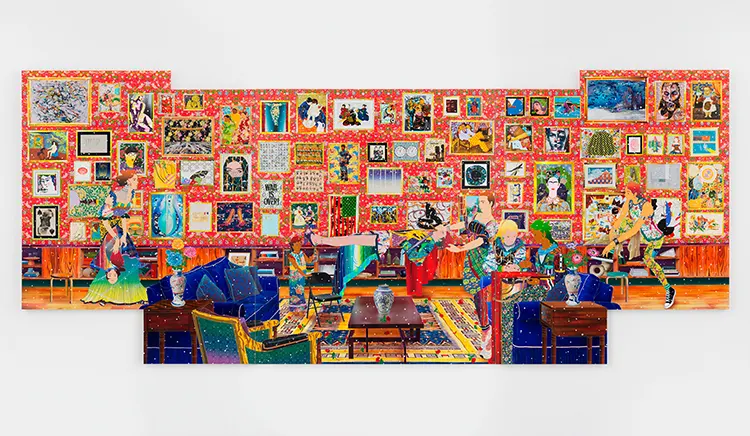
Tomokazu Matsuyama: A Conduit of Cultural Expression
Throughout his career, Matsuyama has consistently challenged and redefined the boundaries of contemporary art. His colorful and detailed compositions are a testament to his background in graphic design, a skill set that he has seamlessly integrated into his art. The juxtaposition of his graphic design background with his self-taught painting techniques results in a unique aesthetic that is both striking and intricate. His works are characterized by their large scale, bold use of fluorescent pop tones, and sometimes irregular shapes or divided panels. These characteristics are not mere stylistic choices but are imbued with significance, serving as vehicles for Matsuyama to explore themes such as cultural identity and globalization in the digital age.
Matsuyama’s influence and recognition extend beyond the canvas and into the realm of institutional and private collections worldwide. His artworks are part of the permanent collections of renowned institutions like the Los Angeles County Museum of Art (LACMA), the Asian Art Museum in San Francisco, and the Long Museum in Shanghai. Additionally, his work has captivated influential private collectors, including the Royal Family of Dubai and celebrities like Swizz Beatz and Alicia Keys. His impact on the global art scene is further evidenced by his contributions to public art, with installations in major cities like Tokyo, Hong Kong, and Beverly Hills. These installations not only showcase his artistic prowess but also exemplify his ability to engage with a wide audience, bringing art into the public sphere and making it an integral part of community life.
Matsuyama’s artistic journey, marked by his commitment to cultural exploration and expression, positions him as a significant figure in the contemporary art world. His works are more than just visual experiences; they are narratives that invite viewers to contemplate the complexities of cultural identity and the evolving nature of global citizenship. Through his art, Matsuyama continues to forge a unique path, one that bridges disparate cultures and eras, and in doing so, enriches the global discourse on art and identity.
